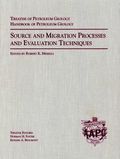Difference between revisions of "Sequence stratigraphy analysis"
Cwhitehurst (talk | contribs) |
Cwhitehurst (talk | contribs) |
||
| Line 22: | Line 22: | ||
Fig. 1. Schematic diagram of stratal surfaces and systems tracts used in the sequence stratigraphy depositional model. | Fig. 1. Schematic diagram of stratal surfaces and systems tracts used in the sequence stratigraphy depositional model. | ||
| + | |||
| + | ==References== | ||
| + | {{reflist}} | ||
Revision as of 21:12, 4 February 2016
| Source and Migration Processes and Evaluation Techniques | |

| |
| Series | Treatise Handbook |
|---|---|
| Part | Petroleum Generation and Migration |
| Chapter | Petroleum Source Rocks and Organic Facies |
| Author | S. R. Jacobson |
| Link | Web page |
| PDF file (requires access) | |
| Store | AAPG Store |
Sequence stratigraphic analysis places strata in genetic frameworks. The method has developed significantly since the seminal work of Vail et al. (1977). An elaborate nomenclature of surfaces and rock packages is evolving to serve this revolutionary paradigm. Geologists always experience word wars in periods of innovation (e.g., plate tectonics, petroleum origin, and Darwinian evolution). To monitor the seemingly impenetrable vocabulary of sequence stratigraphy, the reader is directed to seek modern treatments, such as Van Wagoner et al. (1988).
Currently used sequence stratigraphic terminology is illustrated in Figure 1. In this framework, the best potential source rocks often occur in condensed sections where sedimentation is restricted to pelagic and hemipelagic particles (Loutit et al., 1988). This environment of rising relative sea level is characterized by limited detrital input. In these relatively deeper water environments, biological productivity may be increased by nutrient upwelling and sedimentary organic matter may be protected from the ravages of oxygen introduced by wave action and active sediment transport. Source rocks do not form in the high-energy depositional regimes where coarse-grained clastics are deposited (e.g., siliceous sands or calcareous oolites) or where reefs grow. Source rocks usually occur as ine-grained sediments (clays and marls) in low-energy environments where low-density organic sediments are deposited and can be preserved. Organic-rich rocks are colored dark gray, black, or chocolate brown, reflecting their relatively high volumetric ratio of organic matter to minerals.
Sequence stratigraphy is usually applied to marine rocks; however, agents forming lacustrine strata essentially respond to many of the same biological, chemical, and physical factors. Runoff and evaporation in lakes substitute for relative sea level changes in marine environments. Organic-rich, lacustrine condensed sections occur where biological productivity is sufficient, oxygenation is low, and mineral input is constrained.
Deltaic deposition of coals may also reflect position in stratigraphic sequences. Most woody coals generate gas, although some bear the algal or bacterial components that can generate oil. Gas-prone terrestrial organic matter composes most coals formed in paralic and limnic swamps and abandoned river channels. These facies are often associated with prograding facies of highstand systems tracts.
Fig. 1. Schematic diagram of stratal surfaces and systems tracts used in the sequence stratigraphy depositional model.